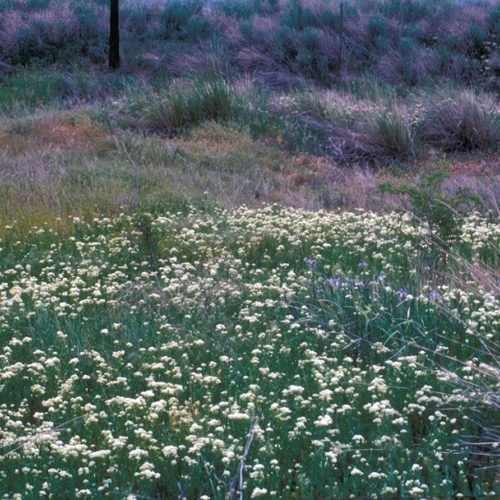Hairy Whitetop
Lepidium appelianum

Family: Brassicaceae
Other Scientific Names:
Cardaria pubescens
Other Common Names: globepodded hoarycress
Weed class: C
Year Listed: 1988
Native to: Central Asia, Himalayas and Western Pakistan
Is this Weed Toxic?:
not known to be
Why Is It a Noxious Weed?
Hairy whitetop has the potential to reduce the value of high-priced wheat lands in areas.
How would I identify it?
General Description
Hairy whitetop is a perennial plant with a spreading root system from which many aerial shoots are produced.
Flower Description
Flower clusters in somewhat flat-topped racemes made up of 20-30 flowers. Flowers on slender pedicles, each with 4 sepals, 4 white petals and 6 stamens.
Leaf description
Leaves are alternately arranged, pubescent and up to about 4 inches long. Leaf margins are irregularly toothed (dentate). Lower leaves have stalks (petioles), upper leaves do not have stalks and have lobed, clasping bases.
Stem description
Stems are stout, pubescent, spreading to upright and 4 to 20 inches tall.
Fruit Seed Description
Seed pods (silicles) are inflated, globular to ellipsoidal in shape and covered with fine hairs. Pods are 0.12 to 0.20 inches (3-5mm) long by 0.16 to 0.24 inches (4-6mm) wide.
May Be Confused With
Hoary cress, Cardaria draba, is similar but does not have hairs on the seed pods (silicles).
Where does it grow?
Hairy whitetop grows well on a variety of soils in dry and moist areas, though shows a preference for alkaline soils. It grows in open conditions in pastures and disturbed areas. Please click here to see a county level distribution map of hairy whitetop in Washington.
How Does it Reproduce?
Hairy white is self-incompatible and is pollinated by insects. Plants spread by seed which each producing around 300-2,000 per plant. Shoots develop from buds which can form on any part of the permanent root system.
How Do I Control It?
Cultural Control
Alfalfa is a more effective competitor than perennial grasses where moisture is abundant.
Herbicide Control
Please refer to the PNW Weed Management Handbook, or contact your county noxious weed coordinator.
For More Information
See our Written Findings for more information about hairy whitetop (Cardaria pubescens).
Report on hairy whitetop from the book "Weed Control in Natural Areas in the Western United States"
Images from the UW Herbarium (WTU) image database of whitetop, Lepidium appelianum









